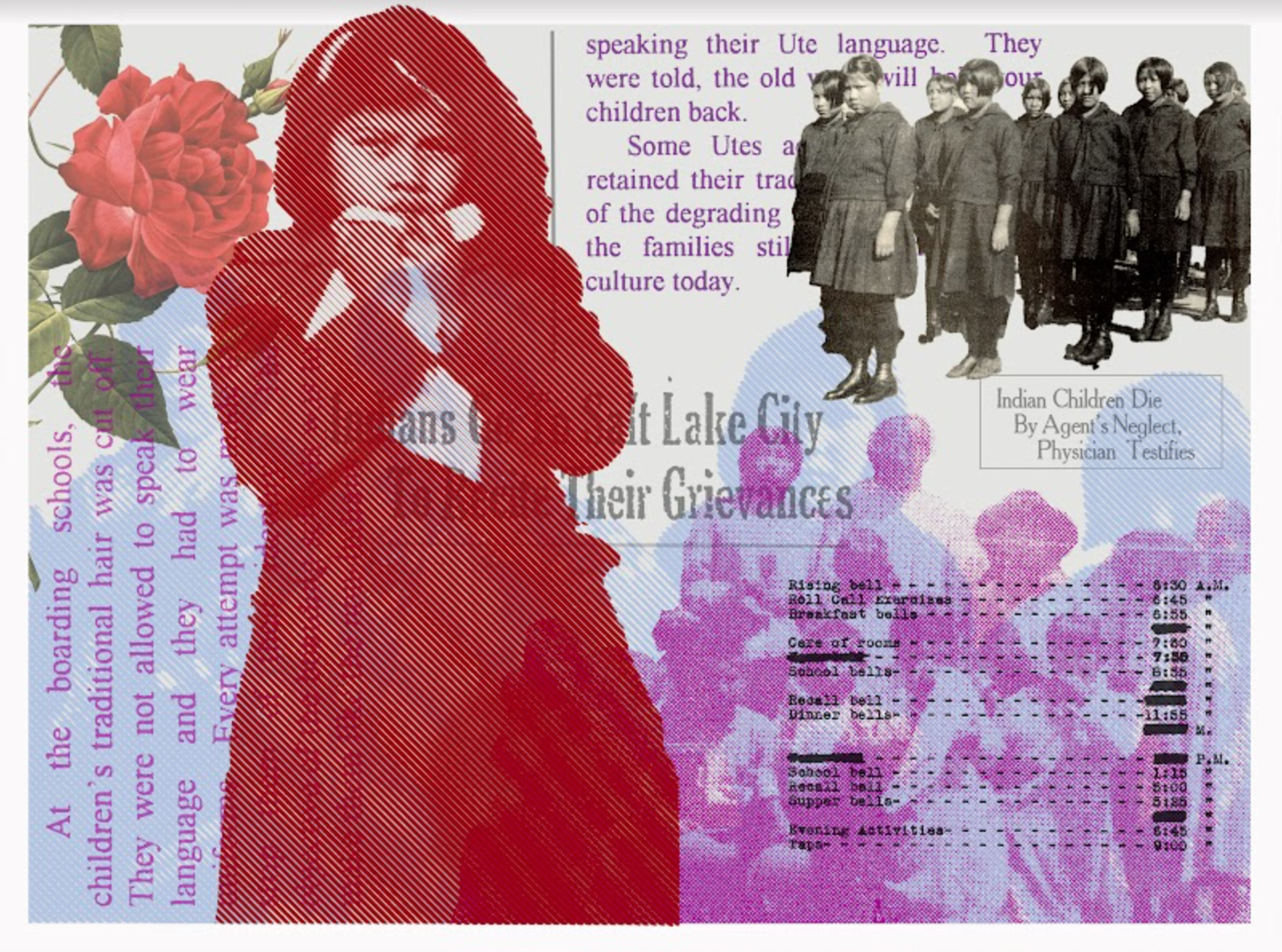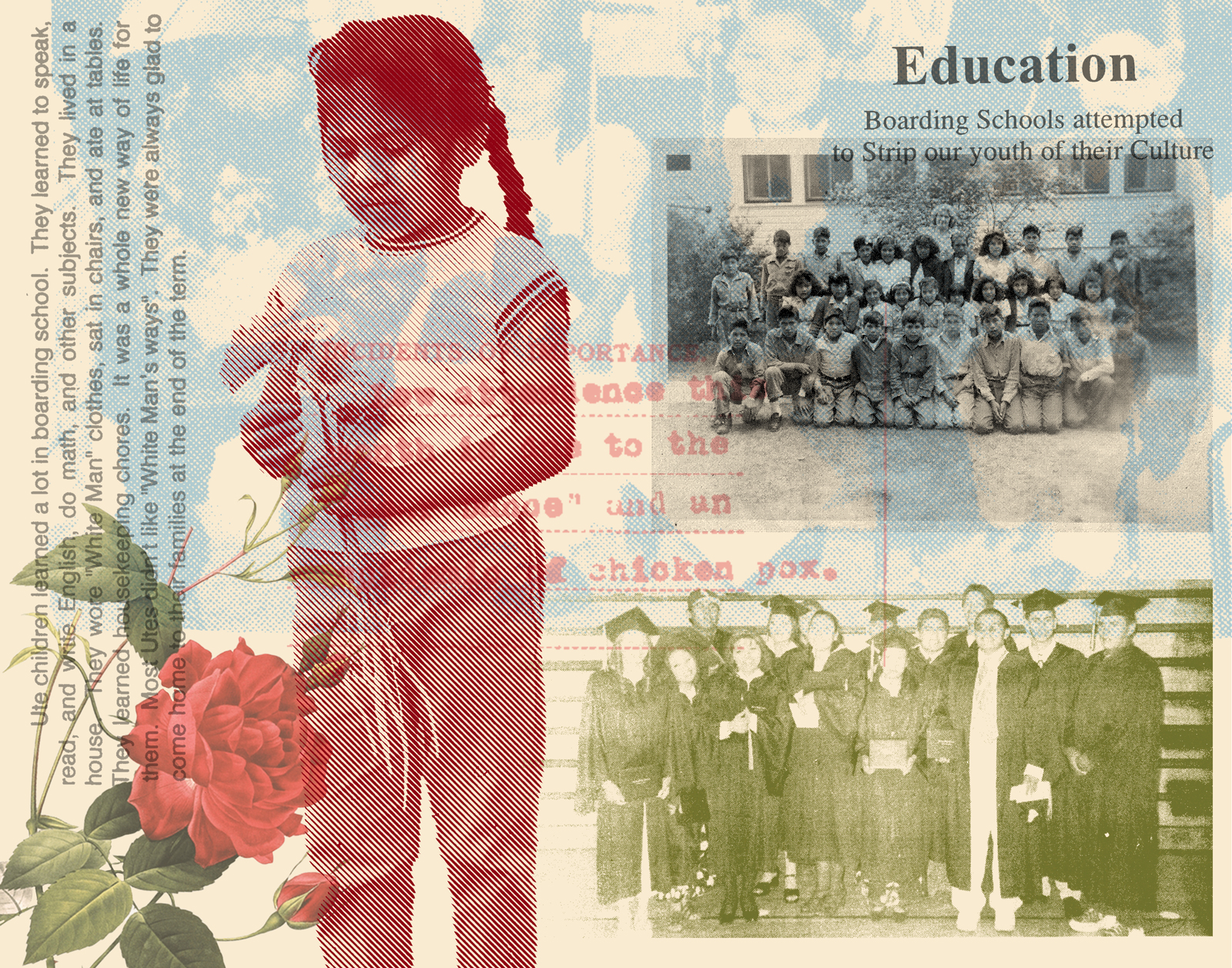By Keith Secola Jr.
Special to The Tribune
My arts practice in recent years has revolved around the use of archive photography that portrays my family and tribe, the Ute people from Colorado and Utah.
I was fortunate enough to inherit these archives when I left Santa Fe, New Mexico, to pursue my graduate degree in the San Francisco Bay area in 2016. Since then, my work has been a deep dive into family history and a rediscovery or reclaiming of lost narratives and memories passed down from generation to generation.
It started with two sets of archives, each belonging to different sides of my family and representing different periods of life on the Uintah & Ouray Reservation in northeastern Utah.
One archive came from an old photo album that belonged to my grandmother, Frances Cesspooch McKinley, Uncompahgre band. The archive depicts her childhood and relatives, in a time period between the early 1900s and the 1940s.
The second set belonged to my grandfather, Francis McKinley, Uncompahgre band. I learned that his archival collection was taken by him and that he had a passion for 35mm photography. Through the decades from early 1950s to the 1980’s my grandfather would photograph and document Ute reservation life, family, ceremonies, and social gatherings.
It is from these images and photographs that I make connections through my own arts practice to recreate narratives and question Native American representation in history.
During graduate school I deconstructed my arts practice and concepts. I began screen printing portraits from the family archives I had access to. It began as a creative impulse, finding whatever material I could to print these portraits onto.
"Boarding Schools"

Until one day I came upon a set of discarded book covers. Through experimentation I began printing and discovered that the images fused so well with the book material, it started to create its own visual narrative. The portraits of family and tribal members challenged the historical text and images of the book covers I was using. It was a way of creating layers between the past and present and to create a new commentary on Native American identity. The work also helped me understand my family’s story and the history of the Northern Ute people.
"Resistance"

"Education"

See examples of Keith Secola’s work and past exhibitions on his website.
This work I created for The Salt Lake Tribune is in the digital format but comes from the same ideas and concepts of the work I have been making recently. Utilizing old documents mainly from two publications — The Salt Lake Tribune and the Ute Bulletin — as well as school documents from the National Archives in Denver, I wanted to create digital collages that represent the past and the present.
The pieces “Boarding Schools,” “Resistance,” and “Education” portray the archival collections from my grandparents and my own personal photography.
In “Boarding Schools” the main subject of the piece is a portrait of my grandmother Frances Cesspooch McKinley in her childhood. She was subjected to boarding schools; she was sent to Uintah Boarding School in Whiterocks, Utah, and also was sent away to the Ignacio Boarding School in Colorado.
The second piece, “Resistance,” is a depiction of two young Ute Bear Dancers, my nephews Chaske Ridley and Samuel Tabee. I wanted this piece to represent the thriving Ute culture that still is being practiced today through the younger generations.
The final piece, “Education,” is a portrait of my Aunty Sherrilla McKinley, taken by my grandfather and his 35mm camera. The image is powerful and portrays hope, aspiration, and love. I wanted to combine both the images of boarding school and graduations from the Ute Indian tribe to represent the long history of questionable education tactics deployed on Ute lands.

Read more about Francis McKinley’s work in the “Failing the Utes” series, Part 2: “ Utah’s education system is failing Ute kids, and a former tribal education leader thinks that’s intentional .”
The Salt Lake Tribune commissioned “Boarding schools,” “Resistance,” and “Education” from Keith Secola, Jr., a grandson of Francis McKinley who is currently living at Fort Duchesne, Utah. Secola earned his bachelor’s degree in Fine Arts in 2012 from the Institute of American Indian Arts in Santa Fe, New Mexico. He earned his Master of Fine Arts in 2018 from the California College of the Arts in San Francisco, Calif.